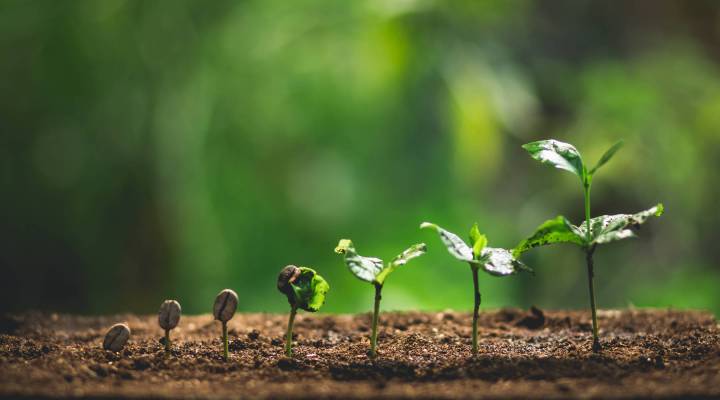
"Green shoots": the sign of economic improvement
Share Now on:
"Green shoots": the sign of economic improvement

As we enter the thick of spring, analysts say they are starting to see “green shoots” in the economy.
The term — first used by a U.K. chancellor during the 1991 recession — has historically been used to describe early signs of an economic recovery.
However, some analysts are starting to use it more generally to suggest that a slowdown in our economy wasn’t as dire as expected, according to Putri Pascualy, managing director at the investment firm PAAMCO. (For the past several months, analysts have been warning that the U.S. could face a recession.)
While the term “green shoots” started picking up steam after former Federal Reserve Chair Ben Bernanke’s use of it during the last financial crisis, it can generally apply to any period of improvement following a recession. We looked at some past recessions to determine when they experienced green shoots, if they did.
The 2007-09 recession
On the road to recovery, a country’s central bank will lower interest rates and inject money into the financial system, according to Jim Welsh, senior portfolio manager at Smart Portfolios. Welsh said it takes six months or longer for a Central Bank’s decisions to have an impact on an economy.
Near the end of the financial crisis, in 2009, then-Fed Chairman Bernanke said he started seeing “green shoots.”
“We are seeing progress in the money market mutual funds and in the business lending area,” he said. “And I think as those green shoots begin to appear in different markets — and as some confidence begins to come back — that will begin the positive dynamic that brings our economy back.”
On the consumer side, the green shoots after most recessions tend to include an increase in auto sales, house purchases and a dip in the unemployment rate, according to Welsh. During this recession, the unemployment rate began to fall after a more than 10% high in late 2009.
The 2001 recession
On the other hand, businesses that had been overspending helped lead the country into a recession in 2001.
“All of a sudden, the dot-com bubble kind of burst,” Welsh said. “The green shoots in that case, given the nature of recession, would have been more businesses starting to spend more and invest more.”
This was different to the typical indicators, like an uptick in consumer spending. When economic conditions improve following a recession, consumers often end up purchasing more cars. But the recession during the early 2000s was unusual in that auto sales remained steady and never took an initial dip.
The 1990-91 recession
The U.S. entered a recession in the early 1990s. Causes included debt accumulation, an increase in oil prices after Iraq’s invasion of Kuwait, and attempts by the Federal Reserve to lower the inflation rate.
Unemployment began to rise more than 7% in 1991, according to data from the St. Louis Fed. It then began to decline — one of the indicators of a “green shoot” — after reaching a high of 7.8% in June 1992.
To fight unemployment, the Federal Reserve started lowering its federal funds rate (like it has in other recessions, Welsh noted), dropping it to around 3% in 1992.
There’s a lot happening in the world. Through it all, Marketplace is here for you.
You rely on Marketplace to break down the world’s events and tell you how it affects you in a fact-based, approachable way. We rely on your financial support to keep making that possible.
Your donation today powers the independent journalism that you rely on. For just $5/month, you can help sustain Marketplace so we can keep reporting on the things that matter to you.


















